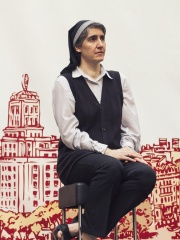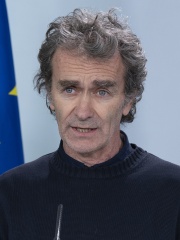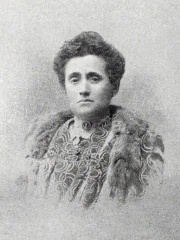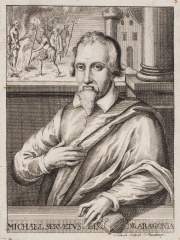
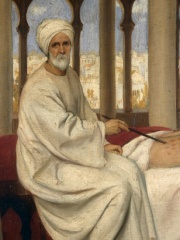
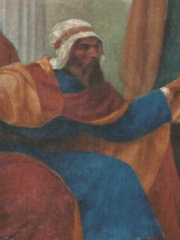
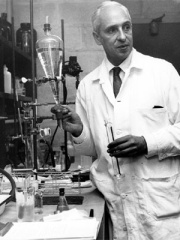

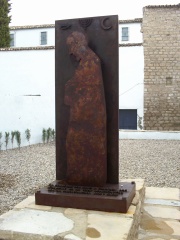
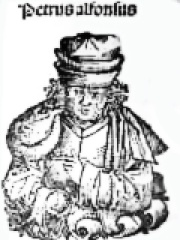
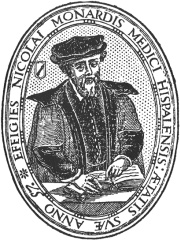
The Most Famous
PHYSICIANS from Spain
This page contains a list of the greatest Spanish Physicians. The pantheon dataset contains 726 Physicians, 15 of which were born in Spain. This makes Spain the birth place of the 10th most number of Physicians behind Switzerland, and Netherlands.
Top 10
The following people are considered by Pantheon to be the top 10 most legendary Spanish Physicians of all time. This list of famous Spanish Physicians is sorted by HPI (Historical Popularity Index), a metric that aggregates information on a biography's online popularity. Visit the rankings page to view the entire list of Spanish Physicians.

1. Michael Servetus (1509 - 1553)
With an HPI of 76.85, Michael Servetus is the most famous Spanish Physician. His biography has been translated into 59 different languages on wikipedia.
Michael Servetus (; Spanish: Miguel Servet; French: Michel Servet; also known as Michel Servetus, Miguel de Villanueva, Revés, or Michel de Villeneuve; 29 September 1509 or 1511 – 27 October 1553) was a Spanish theologian, physician, cartographer, and Renaissance humanist. He was the first European to correctly describe the function of pulmonary circulation, as discussed in Christianismi Restitutio (1553). He was a polymath versed in many sciences: mathematics, astronomy and meteorology, geography, human anatomy, medicine and pharmacology, as well as jurisprudence, translation, poetry, and the scholarly study of the Bible in its original languages. He is renowned in the history of several of these fields, particularly medicine. His work on the circulation of blood and his observations on pulmonary circulation were particularly important. He participated in the Protestant Reformation, and later rejected the doctrine of the Trinity and mainstream Catholic Christology. After being condemned by Catholic authorities in France after the publication of the Restitutio, he fled to Calvinist Geneva in 1553. He was denounced by John Calvin, a principal instigator of the Protestant Reformation, and burned at the stake for heresy by order of the city's governing council. The full culpability of Calvin in the execution has been the subject of historical debate.

2. Al-Zahrawi (936 - 1013)
With an HPI of 76.57, Al-Zahrawi is the 2nd most famous Spanish Physician. His biography has been translated into 49 different languages.
Abū al-Qāsim Khalaf ibn al-'Abbās al-Zahrāwī al-Ansari (c. 936–1013), popularly known as al-Zahrawi, Latinised as Albucasis or Abulcasis (from Arabic Abū al-Qāsim), was an Arab physician, surgeon and chemist from al-Andalus. He is considered one of the greatest surgeons of the Middle Ages. Al-Zahrawi's principal work is the Kitab al-Tasrif, a thirty-volume encyclopedia of medical practices. The surgery chapter of this work was later translated into Latin, attaining popularity and becoming the standard textbook in Europe for the next five hundred years. Al-Zahrawi's pioneering contributions to the field of surgical procedures and instruments had an enormous impact in the East and West well into the modern period, where some of his discoveries are still applied in medicine to this day. He pioneered the use of catgut for internal stitches, and his surgical instruments are still used today to treat people. He was the first physician to identify the hereditary nature of haemophilia and describe an abdominal pregnancy, a subtype of ectopic pregnancy that in those days was a fatal affliction, and was first to discover the root cause of paralysis. He also developed surgical devices for Caesarean sections and cataract surgeries.

3. Ibn Zuhr (1091 - 1162)
With an HPI of 69.20, Ibn Zuhr is the 3rd most famous Spanish Physician. His biography has been translated into 34 different languages.
Abū Marwān ‘Abd al-Malik ibn Zuhr (Arabic: أبو مروان عبد الملك بن زهر), traditionally known by his Latinized name Avenzoar (; 1094–1162), was an Arab physician, surgeon, and poet. He was born at Seville in medieval Andalusia (present-day Spain), was a contemporary of Averroes and Ibn Tufail, and was the most well-regarded physician of his era. He was particularly known for his emphasis on a more rational, empiric basis of medicine. His major work, Al-Taysīr fil-Mudāwāt wal-Tadbīr ("Book of Simplification Concerning Therapeutics and Diet"), was translated into Latin and Hebrew and was influential to the progress of surgery. He also improved surgical and medical knowledge by keying out several diseases and their treatments. Ibn Zuhr performed the first experimental tracheotomy on a goat. He is thought to have made the earliest description of bezoar stones as medicinal items.

4. Severo Ochoa (1905 - 1993)
With an HPI of 67.84, Severo Ochoa is the 4th most famous Spanish Physician. His biography has been translated into 59 different languages.
Severo Ochoa de Albornoz (Spanish: [seˈβeɾo oˈtʃoa ðe alβoɾˈnoθ]; 24 September 1905 – 1 November 1993) was a Spanish physician and biochemist, and winner of the 1959 Nobel Prize in Physiology or Medicine together with Arthur Kornberg for their discovery of "the mechanisms in the biological synthesis of deoxyribonucleic acid (DNA)".
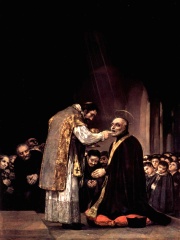
5. Joseph Calasanz (1556 - 1648)
With an HPI of 67.04, Joseph Calasanz is the 5th most famous Spanish Physician. His biography has been translated into 31 different languages.
Joseph Calasanz (Catalan: Josep de Calassanç; Spanish: José de Calasanz; Italian: Giuseppe Calasanzio; September 11, 1557 – August 25, 1648), also known as Joseph Calasanctius and Josephus a Matre Dei, was a Spanish Catholic priest, educator and the founder of the Pious Schools, which provided free education to poor boys. For this purpose he founded the religious order that ran them, commonly known as the Piarists. He became a close friend of the renowned astronomer Galileo Galilei. Joseph is honored as a saint by the Catholic Church, following his 1767 papal canonisation.

6. Leander of Seville (534 - 600)
With an HPI of 66.30, Leander of Seville is the 6th most famous Spanish Physician. His biography has been translated into 25 different languages.
Leander of Seville (Spanish: Leandro de Sevilla; Latin: Leandrus; c. 534 AD – 13 March 600 or 601) was a Hispano-Roman Catholic prelate who served as Bishop of Seville. He was instrumental in effecting the conversion of the Visigothic kings Hermenegild and Reccared to Catholicism. His brother (and successor as bishop) was the encyclopedist Isidore of Seville.

7. Hasdai ibn Shaprut (910 - 975)
With an HPI of 65.36, Hasdai ibn Shaprut is the 7th most famous Spanish Physician. His biography has been translated into 23 different languages.
Hasdai ibn Shaprut (Hebrew: חסדאי אבן שפרוט; Arabic: حسداي بن شبروط, romanized: Abu Yusuf ibn Shaprut), also known as Abu Yusuf ben Yitzhak ben Ezra, was a Jewish scholar, physician, diplomat, and patron of science in medieval al-Andalus (c. 915–970). He served as a minister at the court of Caliph Abd al-Rahman III of Córdoba, where he was responsible for foreign affairs and diplomacy. Renowned for his medical expertise, most famously for treating the obesity of Sancho of León, he is also remembered for overseeing the Arabic translation of De Materia Medica by Dioscorides, which became a cornerstone of medieval pharmacology.

8. Petrus Alphonsi (1062 - 1140)
With an HPI of 59.12, Petrus Alphonsi is the 8th most famous Spanish Physician. His biography has been translated into 16 different languages.
Petrus Alphonsi (died after 1116) was a Spanish physician, writer, astronomer and polemicist who was born and raised as a Jew and later in life converted to Christianity in 1106. He is also known just as Alphonsi, and as Peter Alfonsi or Peter Alphonso, and was born Moses Sephardi. Born in Islamic Spain, he mostly lived in England and France after his conversion.

9. Nicolás Monardes (1508 - 1588)
With an HPI of 57.46, Nicolás Monardes is the 9th most famous Spanish Physician. His biography has been translated into 15 different languages.
Nicolás Bautista Monardes (1493 – 10 October 1588) was a Spanish physician and botanist. Monardes published several books of varying importance. In Diálogo llamado pharmacodilosis (1536), he examines humanism and suggests studying several classical authors, principally Pedanius Dioscorides. He discusses the importance of Greek and Arab medicine in De Secanda Vena in pleuriti Inter Grecos et Arabes Concordia (1539). De Rosa et partibus eius (1540) is about roses and citrus fruits. It is known that Monardes also believed that tobacco smoke was an infallible panacea. Monardes' most significant and well known work was Historia medicinal de las cosas que se traen de nuestras Indias Occidentales, published in three parts under varying titles (in 1565, 1569 and completed in 1574; unchanged reprint in 1580). This was translated into Latin by Charles de l'Écluse and into English by John Frampton with the title "Joyfull Newes out of the newfound world".
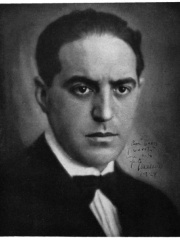
10. Gregorio Marañón (1887 - 1960)
With an HPI of 56.19, Gregorio Marañón is the 10th most famous Spanish Physician. His biography has been translated into 16 different languages.
Gregorio Marañón y Posadillo, OWL ([ɡɾeˈɣoɾjo maɾaˈɲon]; 19 May 1887 – 27 March 1960) was a Spanish physician, scientist, historian, writer and philosopher. He married Dolores Moya in 1911, and they had four children (Carmen, Belén, María Isabel and Gregorio).
People
Pantheon has 15 people classified as Spanish physicians born between 534 and 1966. Of these 15, 2 (13.33%) of them are still alive today. The most famous living Spanish physicians include Teresa Forcades, and Fernando Simón. The most famous deceased Spanish physicians include Michael Servetus, Al-Zahrawi, and Ibn Zuhr.
Living Spanish Physicians
Go to all RankingsDeceased Spanish Physicians
Go to all RankingsMichael Servetus
1509 - 1553
HPI: 76.85
Al-Zahrawi
936 - 1013
HPI: 76.57
Ibn Zuhr
1091 - 1162
HPI: 69.20
Severo Ochoa
1905 - 1993
HPI: 67.84
Joseph Calasanz
1556 - 1648
HPI: 67.04
Leander of Seville
534 - 600
HPI: 66.30
Hasdai ibn Shaprut
910 - 975
HPI: 65.36
Petrus Alphonsi
1062 - 1140
HPI: 59.12
Nicolás Monardes
1508 - 1588
HPI: 57.46
Gregorio Marañón
1887 - 1960
HPI: 56.19
Concepción Aleixandre
1862 - 1952
HPI: 55.25
Fernando Quiroga Palacios
1900 - 1971
HPI: 54.34
Overlapping Lives
Which Physicians were alive at the same time? This visualization shows the lifespans of the 5 most globally memorable Physicians since 1700.

